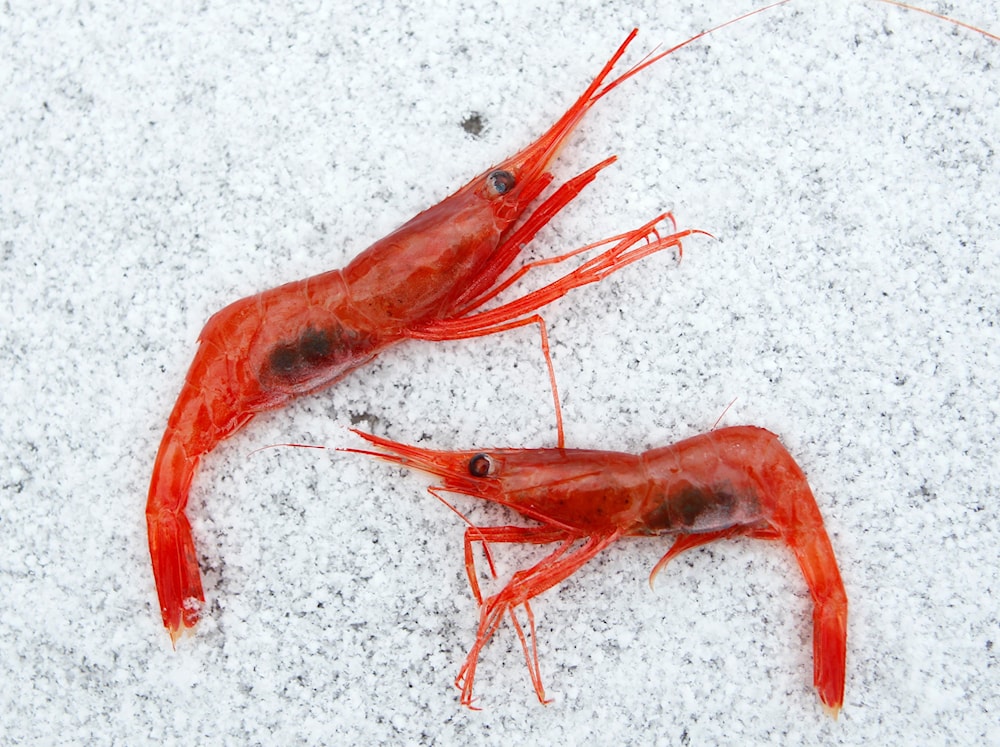Microplastics found in 99% of seafood, study reveals
The peer-reviewed study found microplastics in 180 out of 182 samples, which included five types of fish and pink shrimp.
-

In this Friday, January 6, 2012 file photo, northern shrimp, also called pink shrimp, lay on snow aboard a trawler in the Gulf of Maine. (AP)
A recent peer-reviewed study has confirmed the extensive presence of microplastics in seafood, raising concerns about their growing prevalence in the food supply and potential health risks.
Researchers found microplastics in 99%—or 180 out of 182—of seafood samples collected from stores or fishing boats in Oregon, with shrimp showing the highest levels of contamination.
The study identified synthetic fibers from clothing and textiles as the most common type of microplastic, making up over 80% of the detected particles. Elise Granek, a microplastics researcher at Portland State University and co-author of the study, emphasized the scale of the issue, "As long as we’re using plastic as a major component in our daily lives and we’re using it in a widespread fashion, then we’re going to see them in our food, too."
Microplastics pose serious health risk
Microplastics have been detected in water samples worldwide, and food is considered a major source of human exposure. Studies have found them in all tested meat and produce products. These tiny particles can carry thousands of chemical compounds, including highly toxic substances like PFAS, bisphenol, and phthalates—chemicals linked to cancer, neurotoxicity, hormone disruption, and developmental issues.
Microplastics can cross the brain and placental barriers, and research indicates that individuals with microplastics in their heart tissue have twice the risk of heart attack or stroke over several years.
How microplastics enter seafood
The study analyzed five types of fish and pink shrimp, showing that microplastics enter seafood through their gills or mouths and travel into the edible portions consumed by humans. Granek explained that shrimp and herring, which feed on plankton near the ocean’s surface, exhibited the highest levels of contamination.
"Plankton often accumulates in ocean fronts and moves in tides in the same way as microplastics." Young lamprey feeding along riverbeds also showed higher contamination levels, but this decreased as they matured and moved into the ocean. Chinook salmon had the lowest levels of microplastics, though researchers only examined their filets, whereas smaller fish and shrimp were analyzed in full.
Processing may increase microplastic levels
Microplastic contamination varied depending on how the seafood was sourced. Lingcod purchased from stores had higher levels than those bought directly from boats, likely due to additional processing. Similarly, processed shrimp contained slightly more microplastics than fresh shrimp, though the difference was not statistically significant.
Despite the contamination, the study's authors do not recommend avoiding seafood, as microplastics have been found in other food sources, including meat and produce. Rinsing seafood before consumption may help reduce microplastic levels.
Granek highlighted that individual actions, such as washing clothes less frequently, using cold water, and avoiding synthetic fabrics and fast fashion, could help reduce microplastic pollution. However, she stressed that systemic policy changes are needed, including mandatory microplastic filters on washing machines.
A bill requiring such filters was passed by the California legislature in 2023 but was vetoed by Governor Gavin Newsom, allegedly due to industry pressure. A similar bill has been introduced in Oregon.
"If we don’t want microplastics in our food, then we’re going to have to make changes to our everyday practices," Granek warned.

 3 Min Read
3 Min Read









